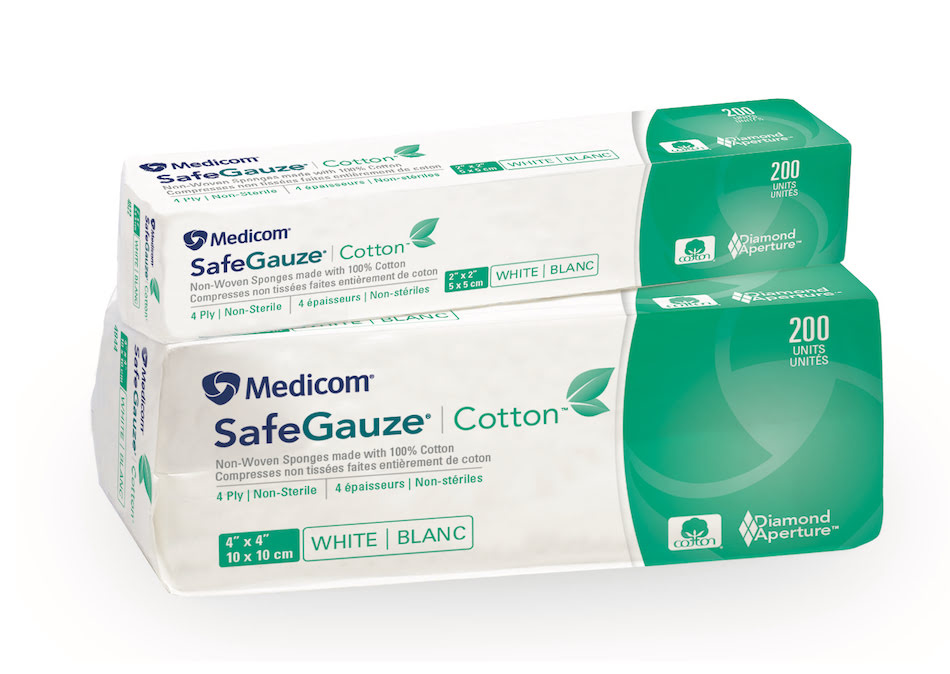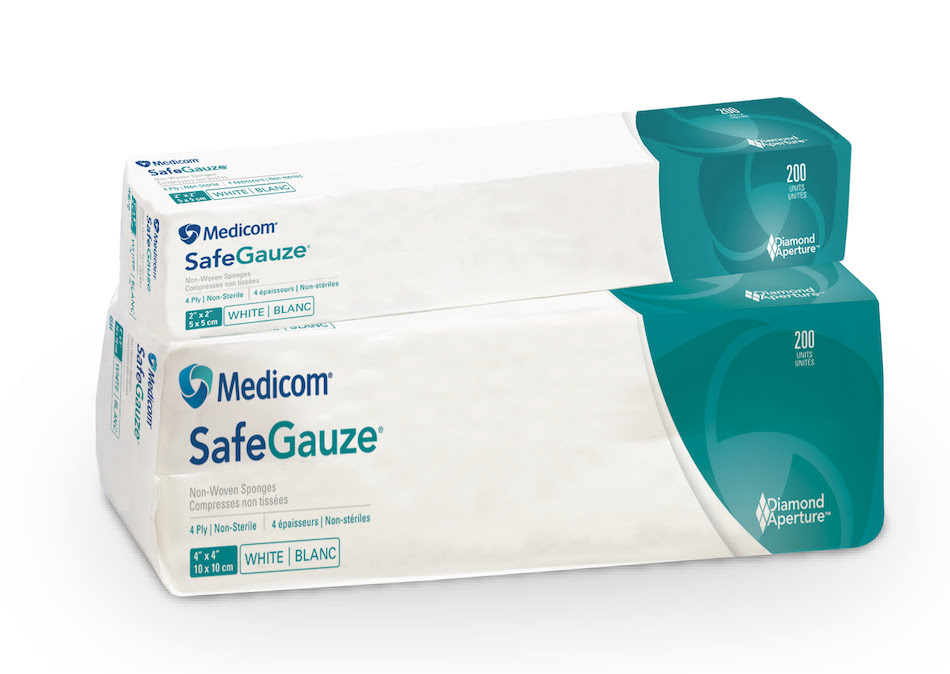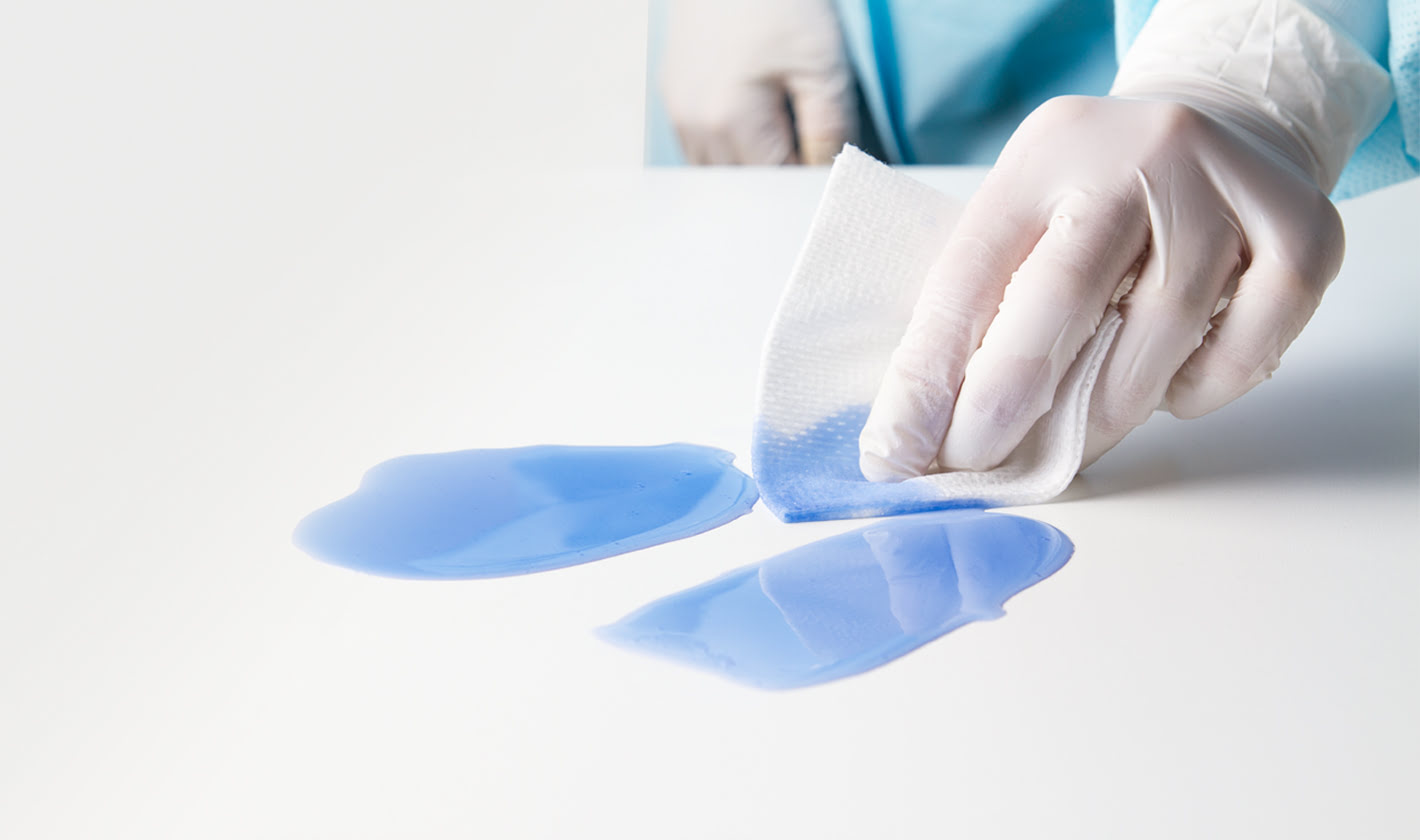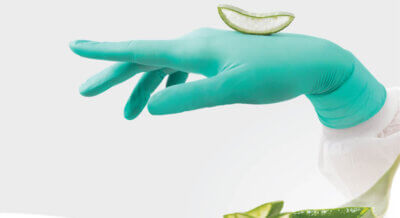Dentists and dental surgeons use gauze sponges to control moisture in a patient’s mouth during dental treatments. Gauze sponges are useful in almost every procedure, from regular cleanings to complex surgeries. Shaped to fit inside a patient’s cheek, these absorbent sponges absorb saliva and blood to keep the work site dry.
Gauze sponges can also be used outside the mouth for dressing, preparing and cleaning wounds and surgical sites, as well as for cleaning and disinfecting instruments and wiping down surfaces.
While strength, absorption and versatility save time, increase efficiency and minimize the number of sponges you use, selecting a sponge that provides softness, low linting and low adhesion to wounds is critical to patient comfort and healing.
Non-woven vs. woven gauze sponges
Gauze sponges are made from two types of fabric: non-woven or woven. Each fabric type has its own advantages and disadvantages, depending on the application.
Woven gauze is made with a loose, open weave, it is less absorbent than non-woven gauze and more likely to lint. For that reason, it is not recommended for packing wounds because loose fibers can enter the wound and interfere with healing.
Non-woven gauze is made from fibers that are pressed together to resemble a weave but are not actually woven together. This gives non-woven gauze higher absorbency and wicking capacity than woven gauze.
Most non-woven gauze is made from synthetic fibers, such as rayon, polyester or a blend of these. Non-woven gauze is stronger, bulkier and softer than woven gauze, and produces less lint. However, non-woven gauze tends to be more expensive than woven.

What to consider when choosing gauze sponges
Criteria
- Absorbency
- Thickness
- Linting
- Texture
- Durability
- Versatility
- Fiber types
- Latex content
Considerations
- A sponge requires adequate absorbency to keep an operative field and wound clean and dry. A high-quality sponge that provides good absorption means you will use fewer sponges, saving you both time and money and producing less waste. Absorbency is also key to ensuring patient comfort, as good absorbency helps prevent patients from swallowing blood, saliva and debris.
- A sponge’s fluid absorption rate and retention rate are directly related to its basis weight. Basis weight is a measure of the thickness of the material the sponge is made from. Naturally the more “plies” (layers) in a sponge, whether non-woven or woven, the higher its absorbency. Additional thickness also provides extra cushioning for extraction sites and other wounds.
- Sponge material that tends to shred or fray often leaves small fibers behind on dental instruments or directly in wounds. These fibers can interfere with both treatment and healing, making it important to choose a sponge that does not produce lint. One of the benefits of non-woven sponges is that they are lint-free.
- A sponge with some texture can be useful for cleaning instruments and surfaces. However, a sponge that is made of rough materials can cause pain and irritation when applied to sensitive tissues. A softer sponge that provides little adhesion to the wound is therefore a better choice for extractions and other procedures that create incisions.
- Higher-quality sponges help ensure that you use fewer sponges per procedure. Given the multiple uses for sponges, choosing a more durable brand can result in significant savings.
- Different procedures and different areas of the mouth require different sizes and shapes of sponges. For example, larger sponges are ideal for cleaning surfaces and instruments, as washcloths for patients’ faces and for hemostasis in larger areas of the mouth. Although some types of non-woven sponges can be cut to size, others are best shaped and sized by the manufacturer to suit specific applications. Cutting woven sponges is not recommended, as it can release fibers.
- Fiber types are an important point of differentiation between woven and non-woven sponges. While woven sponges are made entirely from cotton, non-woven sponges can be made either entirely from cotton or from blends of polyester and rayon. Cotton fibers are ideal for applications where there is more moisture because cotton fibers get stronger as they get wetter. Polyester, on the other hand, is a non-absorbent fiber, so its strength doesn’t change when it gets wet. For that reason, polyester is typically combined with rayon. The two fibers complement each other because whereas polyester is strong, rayon is absorbent. It should also be noted that while both cotton and rayon are biodegradable, polyester is not.
- Because latex allergies and sensitivities have become more common, sponges that are free of natural rubber latex are generally the safest choice.
Criteria
Considerations
Choosing the right sponges for all your needs
Medicom offers a complete range of gauze sponges in a wide variety of shapes and sizes for every application. With so many options, you are sure to find the right Medicom sponge to meet all your clinical needs.

Medicom SafeGauze® Premium Non-Woven Sponges with Diamond Aperture™
Medicom SafeGauze® is made in the USA from a luxuriously soft blend of viscose and polyester. These premium sponges are more absorbent than traditional sponges thanks to their Diamond Aperture, a unique open weave design with a 40-gram basis weight that provides faster absorption and higher fluid retention.
Soft, smooth, strong and low linting, these highly versatile sponges are suitable for a wide range of uses, including disinfecting, general cleaning and prepping. They are ideal for placement on incision/ extraction sites because they release easily for faster healing.

Medicom SafeGauze® Cotton™ Non-Woven Gauze Sponges
Medicom SafeGauze® Cotton™ Non-Woven Gauze Sponges are made from 100% natural cotton. They combine optimal softness for patient comfort and dependable strength for cleaning surfaces and instruments.
View our complete selection of sponges, including exodontia sponges, stick sponges, peanut sponges, as well as a full range of sterile and X-ray detectable options, here.



 English (US)
English (US)


